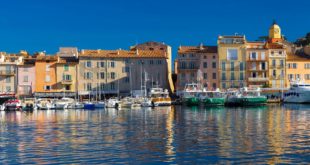The Palace of Westminster, London is a UNESCO World Heritage Site and it serves as the meeting place for the House of Lords and House of Commons, which are two houses of the United Kingdom Parliament. It is known commonly as Houses of Parliament, of course after its tenants and the palace lies nearby Middlesex bank of River Thames, City of Westminster found in Central London. Its name has been derived from Westminster Abbey which is its neighbor and this can be used to refer to either one of the two structures. The first one is the Old Palace which is a medieval building complex destroyed in 1834 by fire and its new replacement, the New Palace which stands today.
The palace continues to retain its original status and style as a royal residence largely for ceremonial reasons. Historical accounts note that the first royal Palace in Westminster was built at the site. Westminster used to be the primary residence of Kings of England in London until the complex was destroyed by a fire in 1512. Then after that, it functioned as the home of parliament and had been meeting since the thirteenth century as well as the seat of the London Royal Courts of Justice that was based around and in Westminster Hall. A much greater fire would ravage the Houses of Parliament that were now heavily rebuilt in 1834. The only significant structures that survived the fire include Cloisters of St. Stephen’s, Chapel of St Mary Undercroft, the Jewel Tower, and Westminster Hall.
Soon after, a competition was held for the palace reconstruction and architect Charles Barry won it and he designed the building to be built in a Perpendicular Gothic style. Old Palace remains except for the then detached Jewel Tower would later be incorporated in the now much larger replacement that contained more than 1100 rooms systematically organized around two courtyard series. Some of the area used for building the New Palace, 8 acres or 3.24 hectares to be precise was reclaimed from the Thames. This was the setting for the principal façade. Barry got help from Augustus W. N Pugin who was well known for his expertise in Gothic style and architecture. He provided decoration designs as well as palace furnishings.
Construction of the Palace of Westminster kicked off in 1840 and it took thirty years for its completion. The project suffered greatly from cost overruns and delays and the death of the two leading architects also contributed greatly to delay the construction. Interior decoration works continued intermittently into the twentieth century. Since then, major works of conservation have continued to be carried out in efforts of reversing the effects caused by London’s air pollution. After the devastating Second World War, the extensive repair was carried out on the Palace of Westminster especially the reconstruction of Commons Chamber after it was bombed in 1941. The Palace of Westminster is a center of the UK’s political life and it has come to be regarded as a metonym for UK Parliament.
 Tourist Destinations World Travel Guides
Tourist Destinations World Travel Guides




